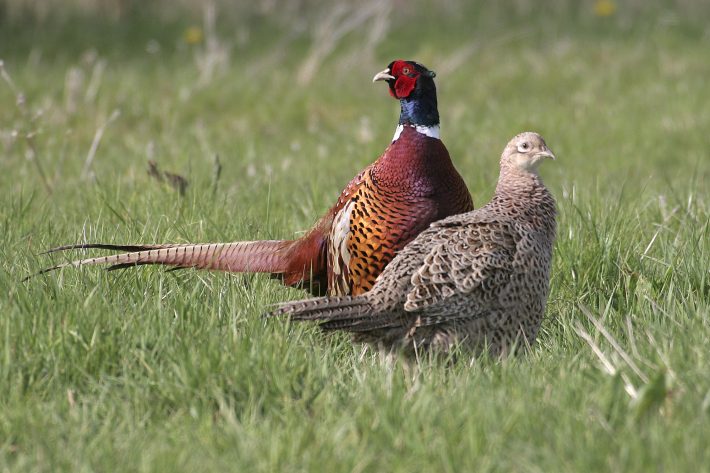Increases in generalist predator populations are associated with pheasant releases
British Trust for Ornithology press release
New research from the British Trust for Ornithology (BTO), just published in Journal of Applied Ecology, has revealed that the release of pheasants and red-legged partridges for commercial shoots may be boosting numbers of the avian predators and scavengers that feed upon them. This has implications for other species that might also fall prey to these predators.

The breeding and release of pheasants and red-legged partridges for commercial gamebird shoots sees some 41–50 million birds released into the UK countryside annually, a figure significantly higher than that seen in other European countries. In order to ensure a reliable shooting resource, there is significant investment in accompanying management to enhance habitat and food availability for gamebirds, and to reduce predation upon them in the area around release sites.
Whilst such game management activities have been reported to have benefits for wider biodiversity, such as the creation of woodland rides of benefit to butterflies, the impacts of the releases themselves have received little attention. The release of these gamebird species, which are not native to the UK, could negatively impact other, native, species through increased competition (for food), altered habitat structure, the spread of disease or changes in predator-prey relationships.
This new research has identified positive associations between the occurrence patterns of gamebirds and the abundance and population growth rates of several generalist predators, including the common buzzard and various members of the crow family. If, as the research suggests, gamebird releases are increasing the numbers of these predators, then this may alter predator-prey dynamics in areas where large numbers of gamebirds are released. This may, in turn, have implications for other species; for example, predation pressure has been identified as a conservation issue for declining breeding waders like Curlew.
Lead author Dr Henrietta Pringle commented ‘The idea that gamebird releases might enhance populations of generalist predators is not new, but our results are the first to indicate this may actually be happening on a national scale. While gamebirds are only one of the factors that could shape predator populations, our work emphasises the need to better understand the impacts of releasing roughly 46 000 tonnes of gamebird biomass into the countryside annually. For context, the estimated total biomass for all native UK breeding bird species is just 19 500 tonnes’.
Dr Pringle continued ‘Investigation of indirect effects of gamebird releases on species for which predation is a key concern is needed to establish whether regulating the numbers of gamebirds released could be an effective conservation tool. A good starting point would be to secure the compulsory recording of releases and of the numbers of predators killed’.
Full study (free to read for a limited time):
Pringle, H., Wilson, M., Calladine, J. & Siriwardena, G.M. (2019). Associations between gamebird releases and general predators, Journal of Applied Ecology, DOI: 10.1111/1365-2664.13451
Media contact:
Paul Stancliffe (BTO Media Manager)
Office: 01842 750050
(9am to 5:30pm Mon-Thurs), (9am to 5pm Friday)
Mobile: 07585 440910
Email: press@bto.org
Images are available for use alongside this News Release, January 2019-16, by emailing press@bto.org
The BTO has an ISDN line available for radio interviews. Please contact us to book an interview. Office:01842 750050
Notes to editors:
- The BTO is the UK’s leading bird research charity. A growing membership and up to 60,000 volunteer birdwatchers contribute to the BTO’s surveys, collecting information that underpins conservation action in the UK. The BTO maintains a staff of 100 at its offices in Thetford, Stirling, Bangor (Wales) and Bangor (Northern Ireland), who analyse and publicise the results of surveys and projects. The BTO’s work is funded by BTO supporters, government, trusts, industry and conservation organisations. www.bto.org
- The analyses carried out in this research used data from the BTO/JNCC/RSPB Breeding Bird Survey, a partnership jointly funded by the BTO, RSPB and JNCC, with fieldwork conducted by volunteers. It also used data from Bird Atlas 2007–2011, which was a joint project between BTO, BirdWatch Ireland and the Scottish Ornithologists’ Club. Numbers of captive gamebirds were taken from UK Animal and Plant Health Agency (APHA) poultry register.
Like what we stand for?
Support our mission and help develop the next generation of ecologists by donating to the British Ecological Society.